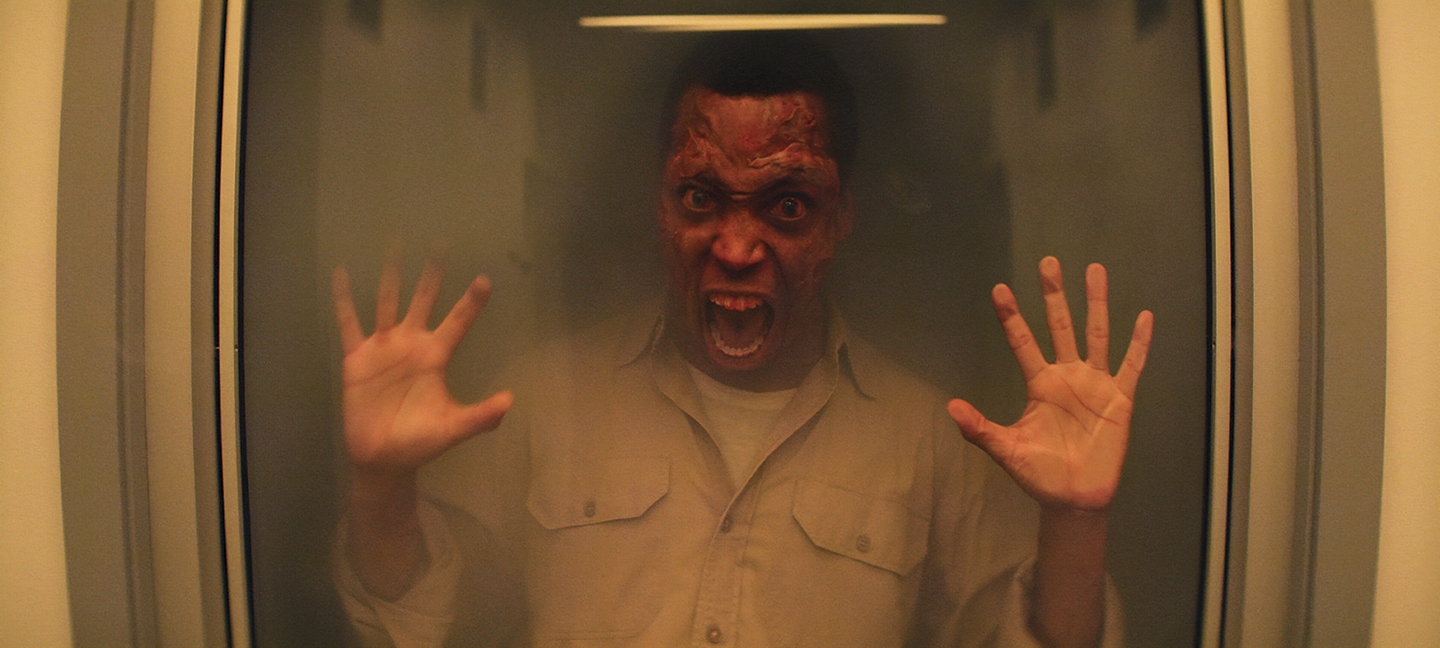
Shadows From The Past: Them
ASC members Checco Varese, Xavier Grobet and Suki Medencevic collaborate on the supernatural period racial drama.
The Amazon Prime series Them is a bold, stylistic hybrid of supernatural horror and drama inspired by historical truths. The first season, set in 1953, follows a Black family that moves from North Carolina to Los Angeles — a relocation triggered by a racially motivated attack against the family’s matriarch, Livia “Lucky” Emory (Deborah Ayorinde).
Lucky, along with husband Henry (Ashley Thomas) — a traumatized World War II veteran — and their two children (Shahadi Wright Joseph and Melody Hurd) settle in East Compton, where the residents of the white neighborhood conspire to intimidate the Emorys into leaving. Disturbing events transpire, and though some are attributable to the locals, others seem to be the work of demons that haunt the family.
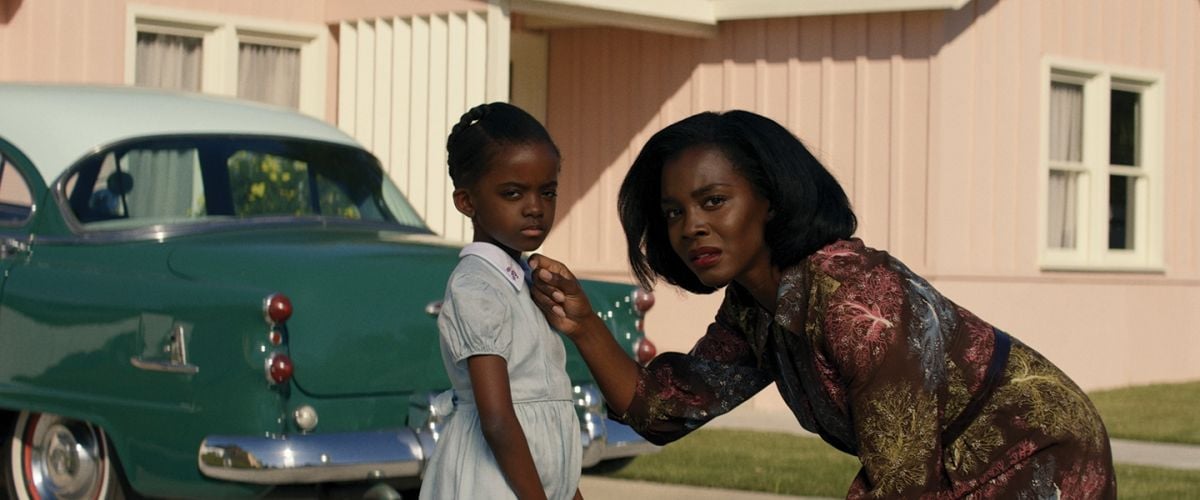
Conceived by Little Marvin, the 10-episode project was shot by three cinematographers: Checco Varese, ASC; Xavier Grobet, ASC, AMC; and Suki Medencevic, ASC, ASBiH, SAS. Varese (The 33, It Chapter Two) recalls Marvin pitching the series as “a 1950s show shot through the lens of a 1970s filmmaker, with the camera tricks of music videos from the ’80s and ’90s, and the technology of the 21st century.”
“There are all of these things happening in the characters’ heads that we had to put into images.”
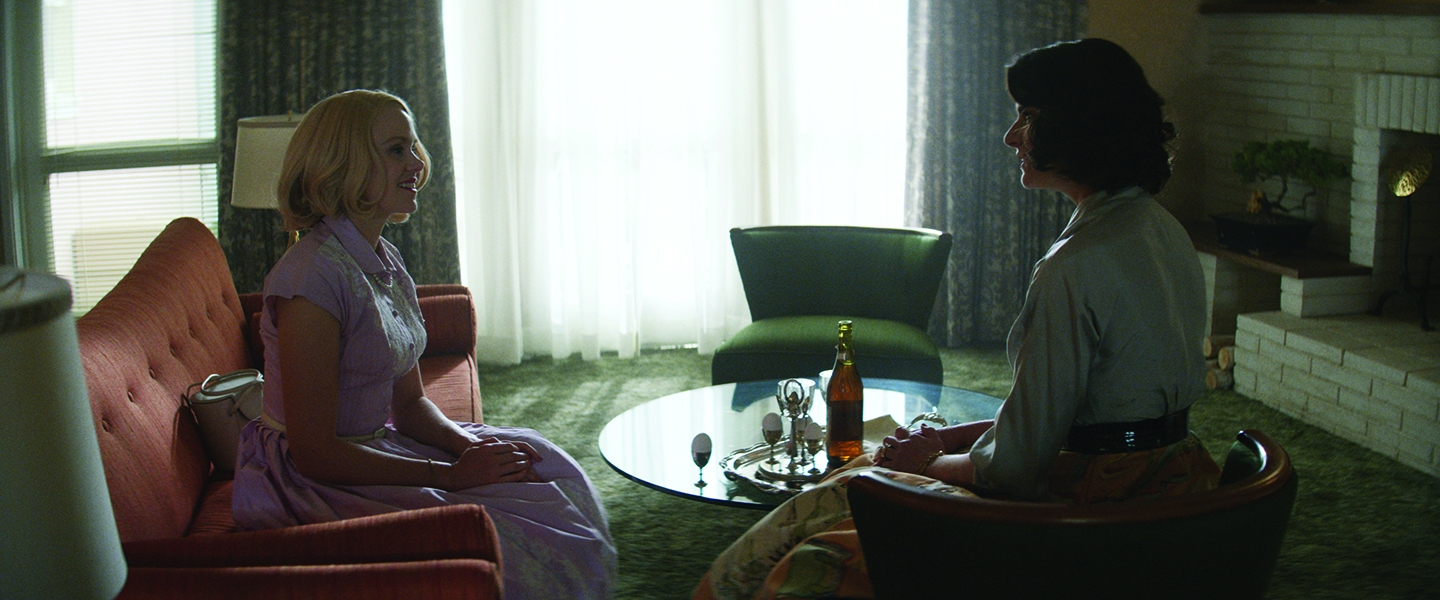
Them executive producer Don Kurt sent Varese the script for the first episode and a synopsis for the rest, then invited him to a meeting with him and Marvin. Varese avoided using movie references in the discussion, noting that he finds universally beloved films to be rare. “Usually, I take references from painters or still photographers,” he says. “For Them, I used a lot of photography as inspiration, mostly black-and-white, including shots of GIs coming home, situations involving racial tension, and scenes from the ’70s and ’80s, as well as paintings by Warhol and Basquiat for their craziness. I did a little presentation and got the job.”
The production wanted to bring on at least one more cinematographer so that one could shoot an episode while the other prepped the next. Varese was happy to see Grobet (Before Night Falls, Watchmen) join the show; the Peruvian-born Varese spent part of his career in Mexico, Grobet’s native country, and the two are friends. “Xavier is a great creative partner,” Varese says. “We both speak Spanish, and we have similar references from art, culture and life. To me, Them isn’t horror — it’s a family, racial and social drama that has supernatural entities — so using old tricks from a lot of horror movies might not have been the best fit. I was hoping for a partner with a strong social sense, and that is Xavier.”
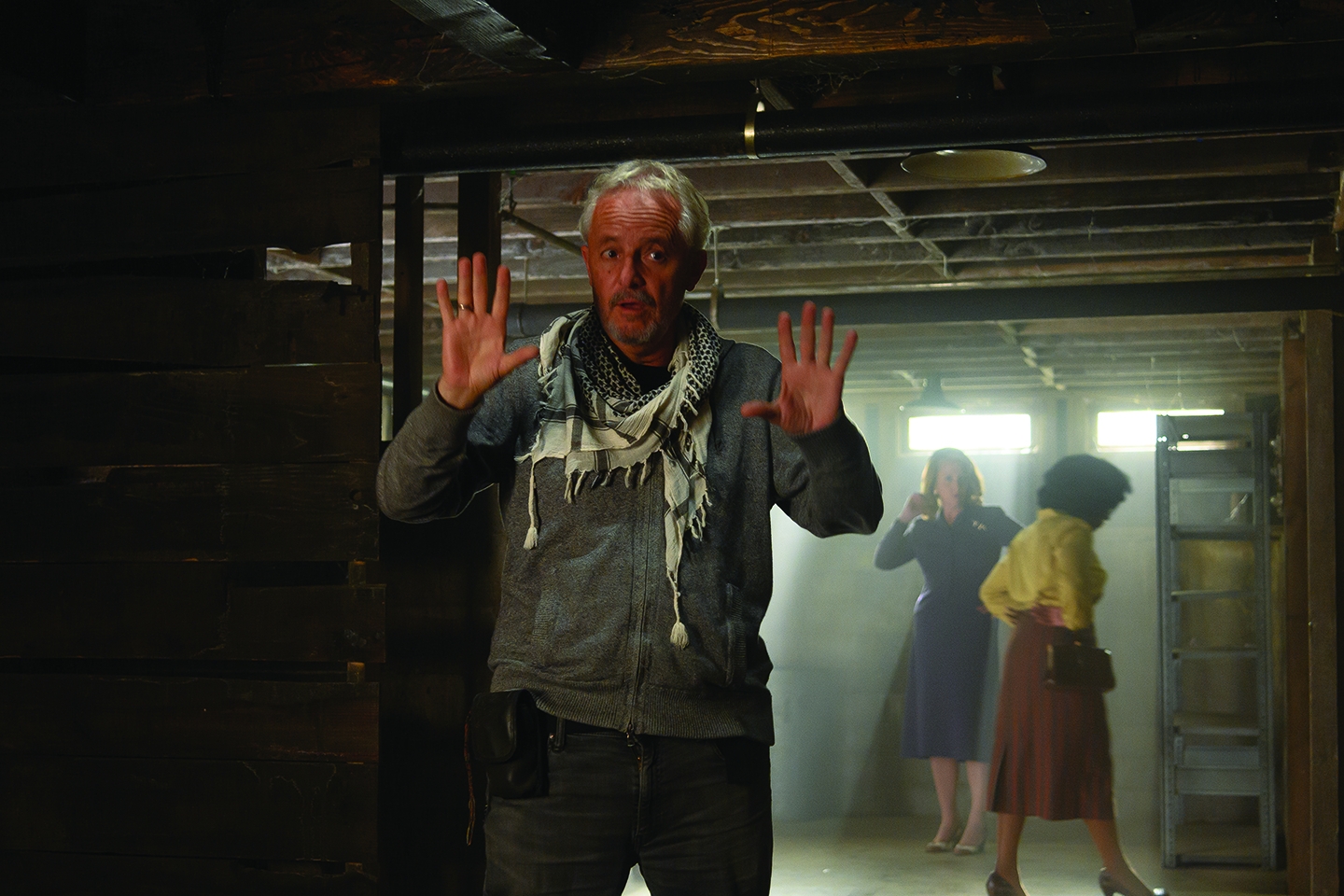
Says Grobet, “It was really good to collaborate with Checco. What’s great about this show is that it’s so visual; there are all of these things happening in the characters’ heads that we had to put into images. And every episode had its own set of tricks we had to work with — each had a scene or a special event that required design and visualization, from a simple change in color on a corridor, to a choreographed sequence involving creatures in the school basement. In the final episode, there’s a ring of fire hovering around the house as the family members battle their inner monsters.”
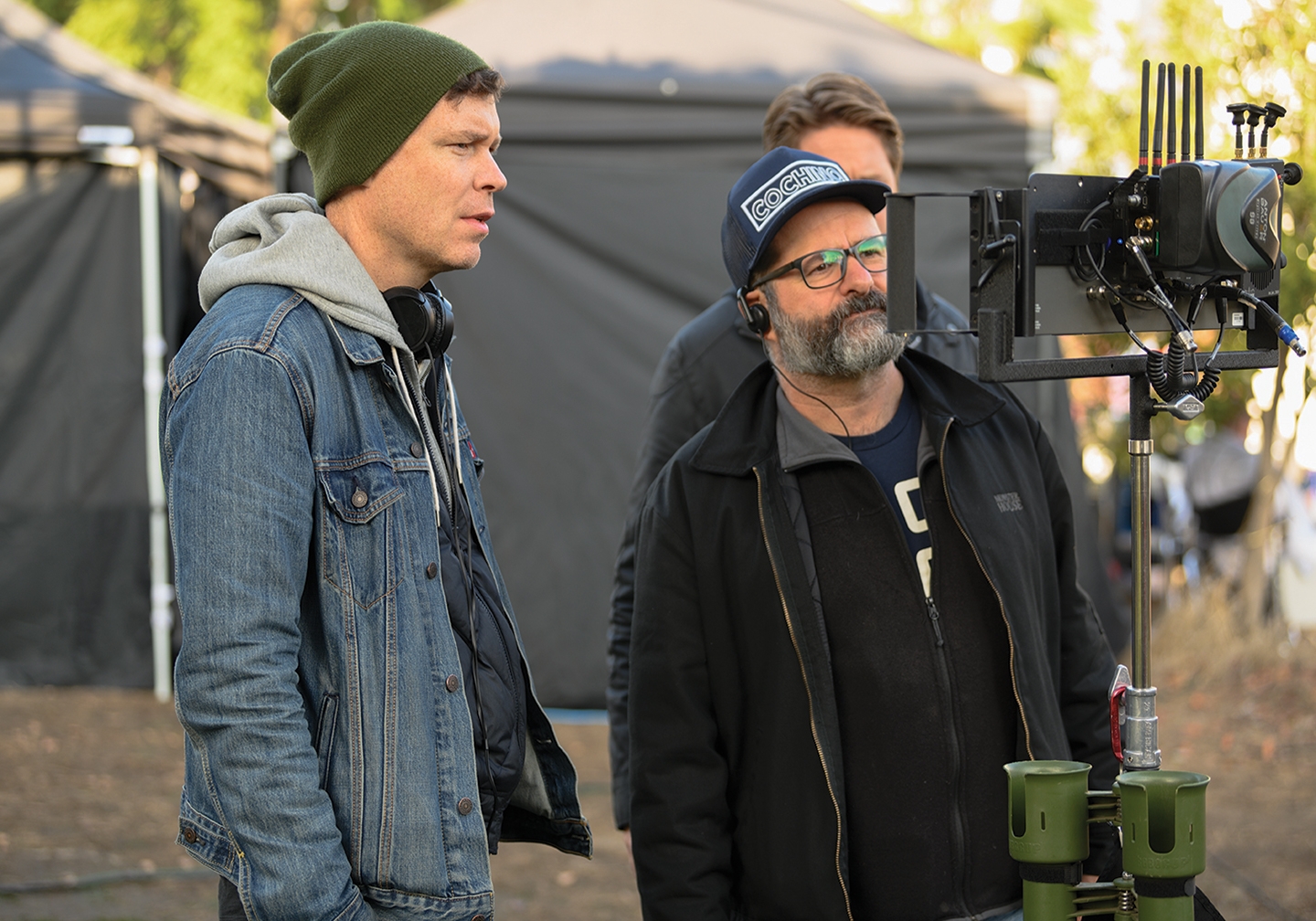
Varese ended up shooting Episodes 1, 5, 7 and 9, and Grobet shot Episodes 2, 4, 6, 8 and 10. Varese worked toward setting the look, tone and language that he and Grobet would follow, and a roster of episode directors — including Nelson Cragg, Craig William Macneill, Ti West, Janicza Bravo and Daniel Stamm — had significant input. Directors have different tastes,” Varese notes. “Nelson, who directed Episode 1 [‘Day 1’] is also a DoP, so he has a very strong sense of cinematography. He imprinted Dutch angles in the dramatic moments more than the others, who might say, ‘I think this whole thing should be handheld.’ I don’t think there’s a priority on stylistic continuity throughout the series; it’s more of an omnibus showcasing each director’s sensibility.”
One of Varese’s first suggestions was framing in the 2.39:1 aspect ratio. “Many people think 2.39 is best suited to the majestic vistas of something like Lawrence of Arabia,” says Varese, “but I believe placing a character at the right end of the long frame and [having] darkness throughout lends itself to horror, drama, and the loneliness of these characters.”
Early on, strategies for the show involved more of a quick-cut, music-video aesthetic and a more experimental style than the final, fully refined approach. While the pilot was in production, Grobet was prepping Episode 2 (“Day 3”) with Cragg. “The initial visual style was pretty wild, and we all discussed bringing it down a bit,” Grobet says. “In the process, we found the language for the show. We looked for that space where we could tell a story conventionally, but also do a lot of camerawork that reflected the psychology of the characters.”
Grobet collaborated with Varese in determining camera and lens choices. Sony Pictures, which produced the show, promoted the Sony Venice 6K camera, which was fine with Varese. He says that whereas Vittorio Storaro, ASC, AIC speaks of “writing with light,” on Them the goal was writing with shadows and darkness.
During camera and lens tests, Varese worked with Company 3 senior colorist and ASC associate Stefan Sonnenfeld to develop the LUT for the show, with assistance from digital-imaging technician Daniele Colombera. The DIT reports that they worked with “a show LUT that could give us the maximum color flexibility — a balanced and neutral color rendition with a hint of coolness in the shadows and a little warmth in the highlights.”
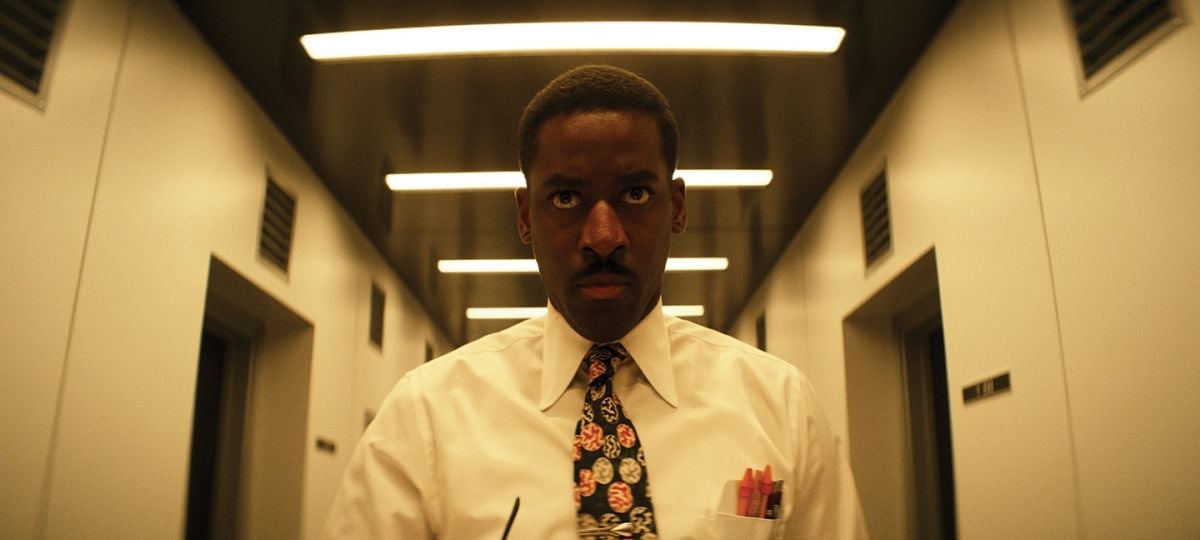
Shooting was performed at 4K in the 2.39:1 anamorphic format, and began with Hawk V-Lite 2x anamorphic prime lenses. However, the filmmakers soon switched to MiniHawk hybrid anamorphic primes, which, being actual spherical lenses with anamorphic qualities, are — due to their closer minimum-object distance — more conducive to the tight close-ups that are a significant part of the series’ language.
“With anamorphic, you can’t start 20 feet away and move right into somebody’s face,” Varese says. “If you want close focus, you have to add a diopter. So I wanted the MiniHawks, which I used on It Chapter Two. Those lenses give you the anamorphic bokeh due to the unique iris mechanism and shape — that same beautiful falloff in the focus — without the limitation of having to keep 3 to 5 feet away from the actor.”
Says Grobet, “I liked the way the Hawk V-Lite anamorphics distorted the image. It was interesting for the show, but we were having issues getting close to actors. We wanted to keep that distortion, but for practical reasons we had to sacrifice that ‘bending effect.’ The MiniHawks have fewer aberrations — they’re cleaner and more defined on the edges.”
One sequence where they were able to capitalize on the V-Lite’s edge-barrel distortion, however, was in “Day 3,” as Henry walks down a hallway at the aerospace plant where he works. An emotional flashback to his experiences in World War II overtake him as he is lured to an ominous room at the end of a corridor, and the curved frame of the walls and door conveys his twisted emotional state and an air of unreality.
Henry’s psychological crisis deepens as the gray slate hall walls begin to change to a yellow color, a recall of when he was experimented on with mustard gas during the war. The changing wall color was a mostly in-camera effect created by Chroma-Q Color Force 72 LEDs. “The hallway was designed to look like it had recessed fluorescent fixtures in the ceiling, but it was actually open above so we could hang the Color Force units a few feet higher,” says Nicholas Kaat, the series’ chief lighting technician. Lighting-console programmer Duane Katz executed the sequence, and the VFX team digitally extended the set and mimicked the color-shifting effect.
In Episode 3 (“Day 4”), Lucky, in need of respite, visits her husband’s cousin Hazel (Paula Jai Parker) in nearby Watts. Afterwards, amid a thunderstorm, she boards a bus for home and dozes off. She wakes as the bus arrives in Compton, and finds herself alone — there’s not even a driver, only the Black Hat Man (Christopher Heyerdahl), a sinister apparition. She tries to leave, but he drags her to the back of the bus, where she writhes on the floor as lightning flashes and the interior bus lights go off and on.
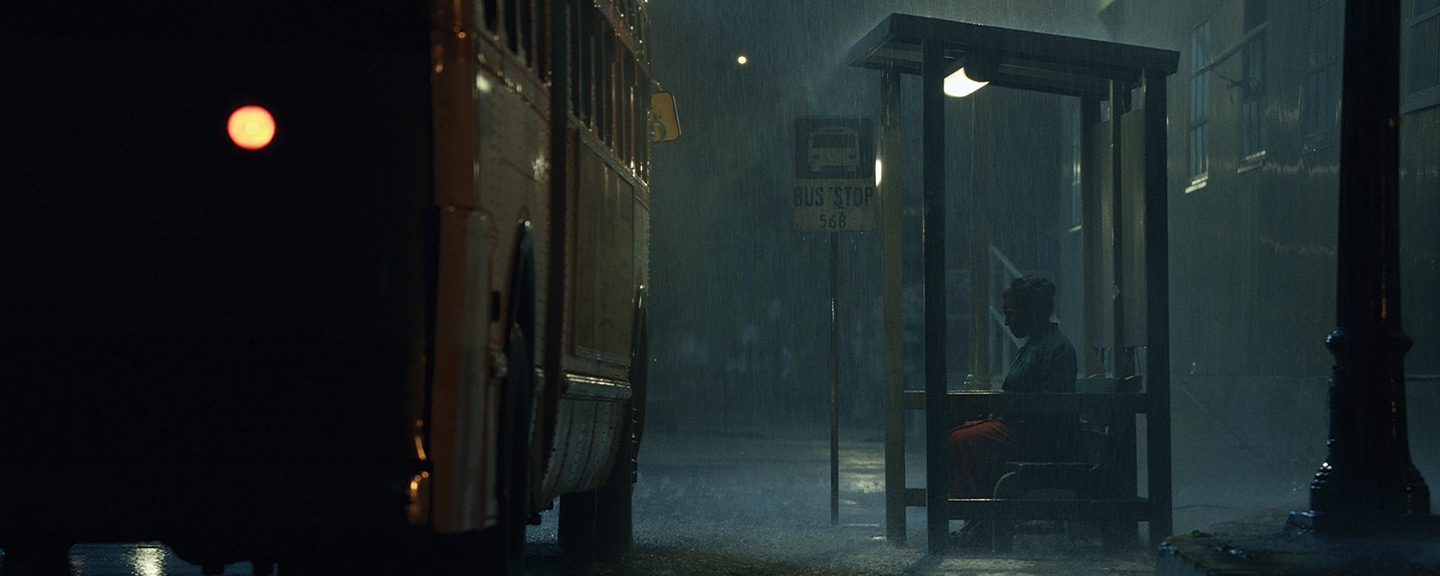
It is the episode’s most dramatic scene, and Varese realized he was going to need help. So he suggested handing over the rest of the episode to Medencevic (Stuck in the Middle, The Great Water), who had been shooting 2nd unit, plates and additional photography for the series, so that he could focus on prepping and shooting the bus sequence.
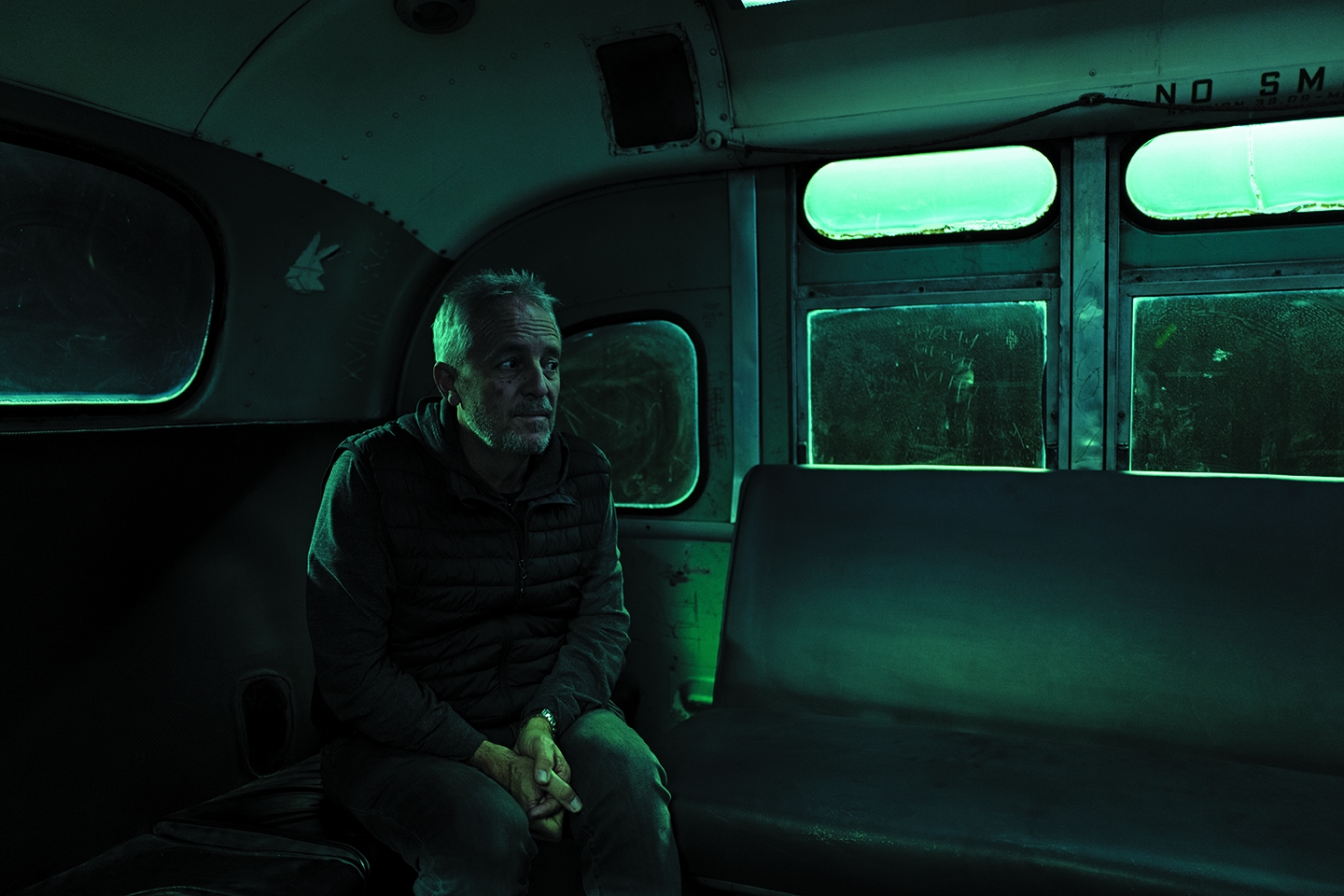
“At the beginning of prep, it was clear to me that someone would have to concentrate 100 percent on that big scene, and Suki was already part of the team, so it was only natural for me to have him complete Episode 3, which was right up his alley, while I completed the complex task of shooting the bus sequence. It was a win-win.”
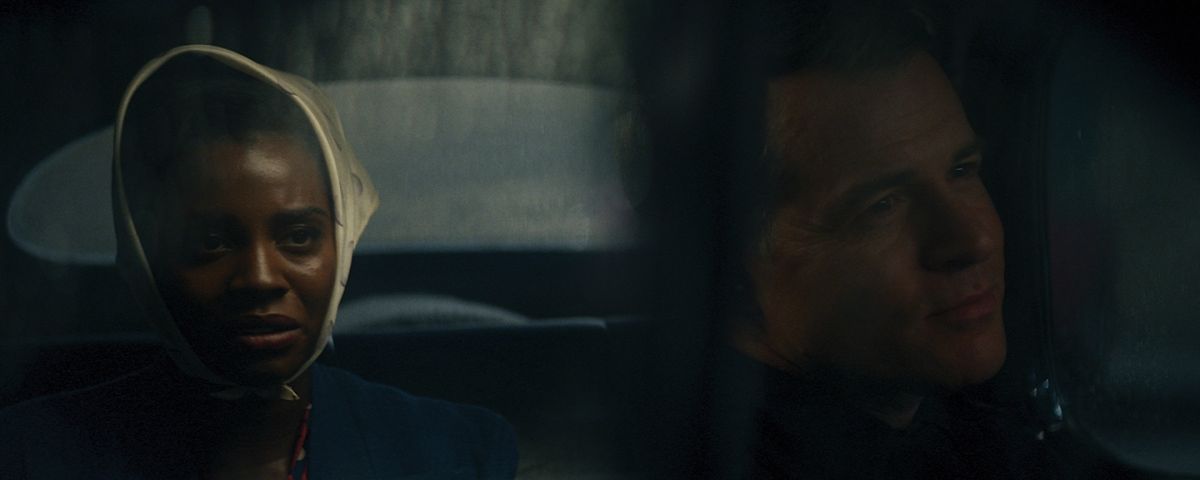
The entire bus sequence was shot on a soundstage at L.A.’s Quixote Studios using a vintage bus in front of LED video walls. “There’s a misunderstanding that when shooting with LED walls you don’t need any additional lighting, but that isn’t true if it’s just a single back-projection wall,” Varese says. “If you’re not surrounded by emitting screens behind the camera and on the ceiling, then you still have to light the character. And shooting in a bus that’s supposed to be moving at night in front of a pretty dark video wall required interactive light. It was a very complex process, but in the end extremely satisfying.”
Plates were shot from a car driving through Los Angeles. Modern signs were erased by the VFX team, but cars weren’t a concern because they were below the frame line.
An additional chief lighting technician, Ryan French, was brought in for the sequence to lessen the load for Kaat, and a team led by rigging chief lighting technician Eugene Bernal was key in the planning. Varese, French and console programmer Katz developed a tracking logarithm for the interactive lights to match the passing lights from the street plates.
The bus interior had Astera Titan LED tubes rigged inside period light boxes. Arri SkyPanel S60-C units were rigged outside on each side of the bus, along with Color Force 72s for chases and ambience, and SolaFrame 3000 moving lights.
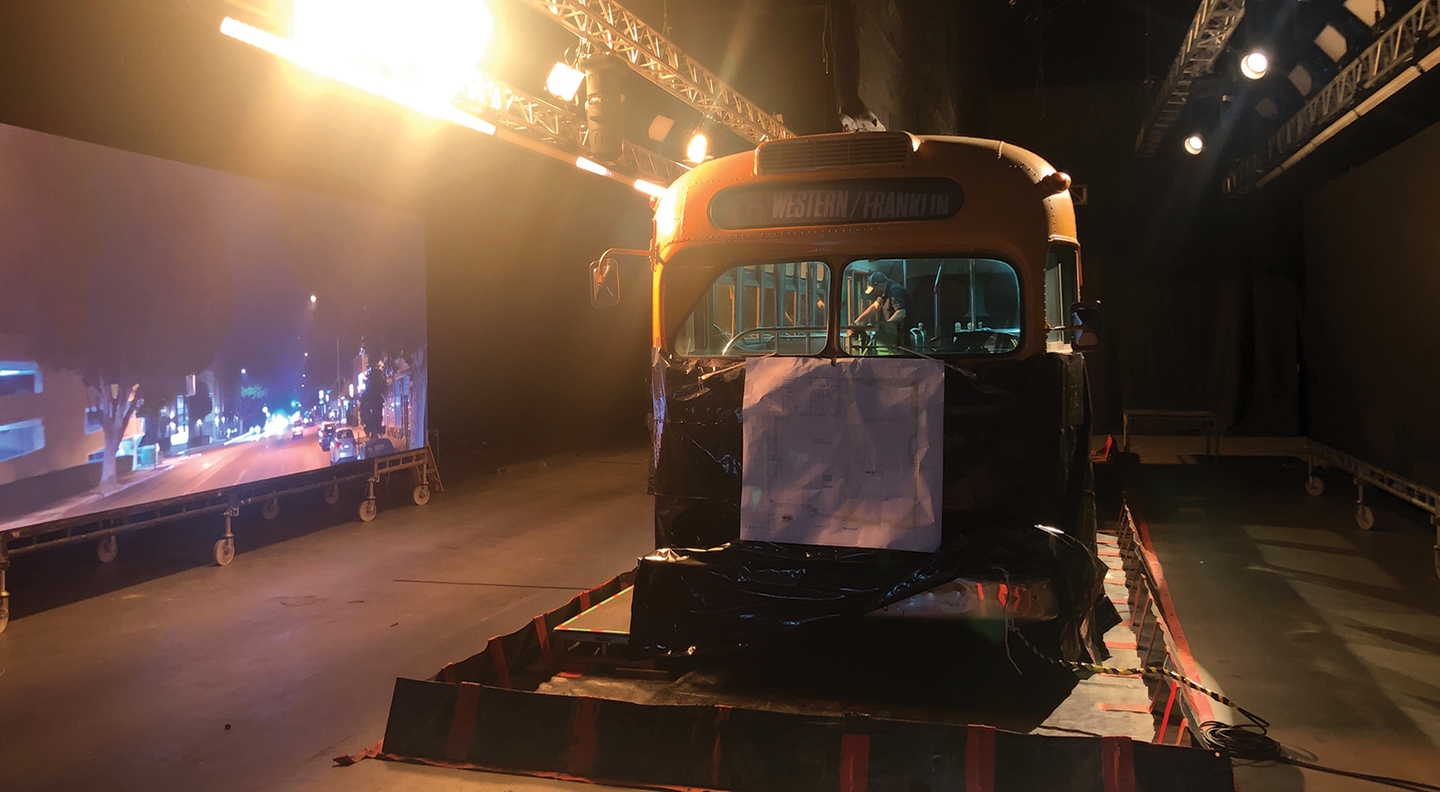
Before he began shooting the rest of the episode, Medencevic says, “I talked to Checco and Xavier about what I was intending to do, because there were some new locations and characters, and we discussed how far I should go in terms of using the language they had established, and maybe taking it to another level. I had been on set for quite a few different situations, which gave me the opportunity to get to know everybody and get a clear sense of the style they were going for.”
One new location was Hazel’s apartment, where Lucky joins a boisterous family gathering, which sharply contrasts with the tense scenes depicted in the white homes of Compton. The script described it as a “Cassavetes-style event,” Medencevic says, acknowledging the style of pioneering indie director John Cassavetes. “I knew what that meant. They wanted a spontaneous energy, as though the viewer is a fly on the wall. Director Daniel Stamm and I came up with the idea to shoot the scene handheld, without camera rehearsal. There’s no way to fake unplanned camerawork. An operator’s natural instinct is always to get the best possible shot, and I said, ‘What if we don’t? What if she walks in and we have two cameras and no idea where things are going and just see what happens?’”
“I used a lot of photography as inspiration, mostly black-and-white, including shots of GIs coming home, situations involving racial tension, and scenes from the ’70s and ’80s, as well as paintings by Warhol and Basquiat.”
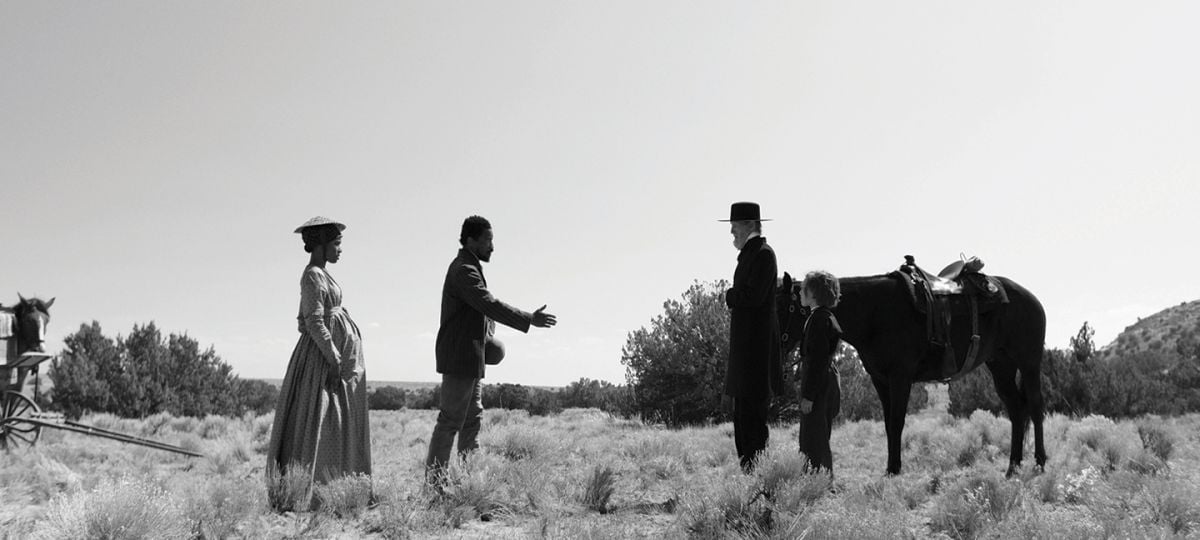
Varese credits A-camera/Steadicam operator Joseph Arena and B-camera operator Joshua Turner with helping the production’s directors and cinematographers enjoy a creative freedom that managed to work within the show’s stylistic parameters.
Medencevic’s episode also includes a pivotal scene in which the town’s ringleader, Betty (Alison Pill), riles up attendees at a town-hall meeting to do whatever it takes to get the Emorys out of their community. The scene was captured in an abandoned medical building near Pomona, and as Medencevic shot day-for-night, the crew tented the building — placing 2Ks outside the windows, pushing in light that could be coming from street lamps. The crew also installed 40-watt bulbs into practical sconces and took advantage of a practical spotlight above the podium.
To contrast the warm glow this created, the cinematographer hid gelled LED tubes that provided green in the shadows. Similarly, practical overhead fluorescents in a hallway at the back of the room were covered with Plus Green.
“We looked for that space where we could tell a story conventionally, but also do a lot of camerawork that reflected the psychology of the characters.”
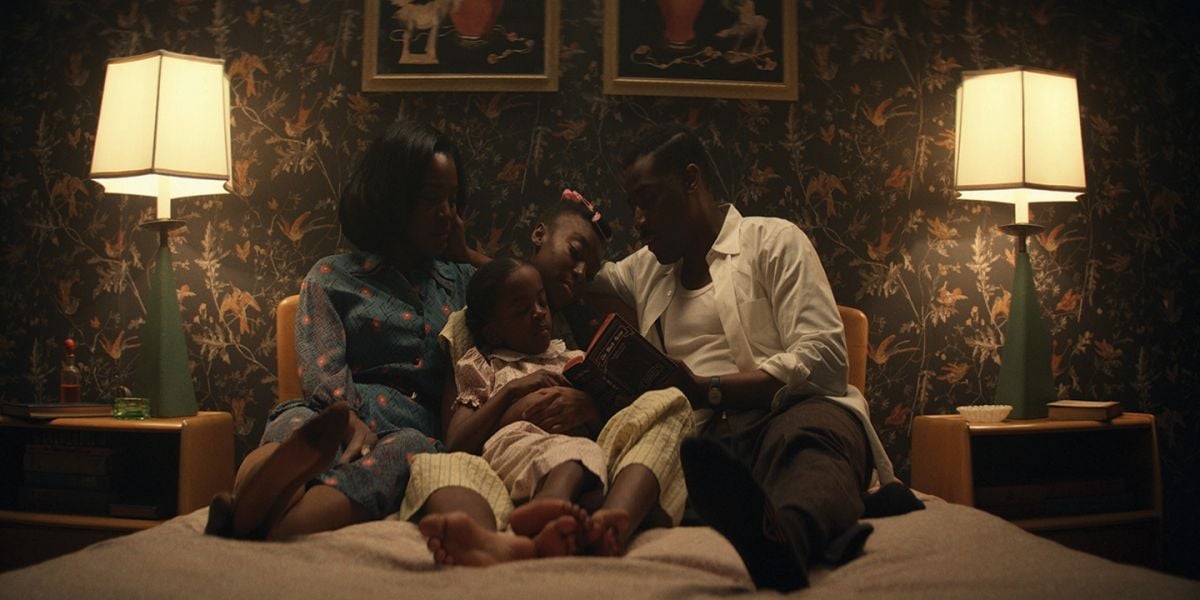
“I felt the combination of orange lights and green shadows gave the scene a bit of a surreal feel that was still grounded in reality,” Medencevic says. “And the setup allowed the operators to move the camera around and efficiently get all the shots the director wanted, which was important considering our page count for the day was six or seven pages.”
Episode 9 (“Covenant II”) is an outlier: Set in the 19th century, it is presented in black-and-white and features the Black Hat Man as the only character we recognize. The plot tells of an early European immigrant settlement in California, and how a Black couple stumbled upon it — and despite the couple’s kindness and assistance, they were horribly abused and tortured, which led them to unleash decades of curses upon the town.
The episode was shot in New Mexico, where production was interrupted by the Covid-19 lockdown. Marvin wanted “Covenant II” to be black-and-white, but the studio also wanted to see how it would look with faded color. “I assured him we could make it work for color, but that it would look great in black-and-white, too,” Varese says. “So, we shot color but had to think black-and-white. I had to work with the colors of the wardrobe and production design, because brown will look gray in black-and-white, and dark blues and greens will look black. We did one grading pass in col-or and one in black-and-white, and they both looked great. During the grading at Company 3, Stefan Sonnenfeld was crucial to the process. His interpretation of the genre was really brilliant.”
Each cinematographer was able to leave his stamp on the series, and they all recount a collaboration that was supportive and devoid of ego.
“There are certain differences in our styles,” Grobet says, “but when I see the trailers for the show, sometimes it’s hard to tell which images are mine. I think we blended together really well.”
TECH SPECS
2.39:1
Cameras: Sony Venice, Red Monstro (for drone work)
Lenses: Hawk MiniHawk Hybrid Anamorphic, V-Lite 2x;
Angénieux Optimo, Optimo Ultra zooms
Varese also spoke about his work in the show for our Clubhouse Conversations series, interviewed by Amelia Vincent, ASC:






